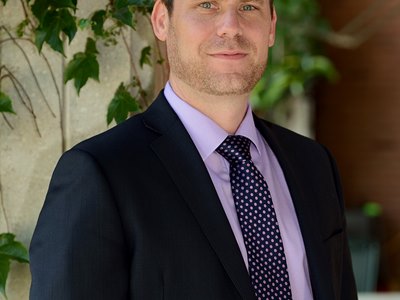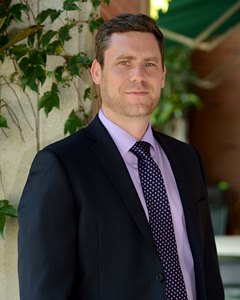O'Rourke Discusses NYRA's Challenges as COVID-19 Rages


There was a time some six months ago when David O'Rourke expected to be spending these days preparing for the opening of Belmont Park.
The start of 2-year-old racing without Lasix and wondering what the Triple Crown had in store for the Belmont Stakes (G1) figured to be some of the other items on the mind of the New York Racing Association's CEO and president.
Yet never in his wildest imagination could O'Rourke have envisioned how he would be spending the early days of April 2020. Like most people in New York and other corners of the nation, O'Rourke is now working from home and, in his case, running horse racing's premier circuit during a pandemic that has people living in isolation and has turned the streets of normally jammed midtown Manhattan into a ghost town in order to combat the spread of the deadly COVID-19 virus.
The life-and-death perils of the frightening situation hit home for NYRA on April 7 when Martin Zapata, who worked for trainer Tom Morley at Belmont, passed away due to the virus. At the time, he was one of 20 people who live and work on the Belmont backstretch that have tested positive for COVID-19.
With New York City an epicenter of the virus with 3,544 deaths through April 7, racing at Aqueduct Racetrack has been shuttered like countless other businesses. The last day of action at the Big A was March 15, and while racing has been suspended until the April 24 opening day at Belmont, it seems a foregone conclusion that the Elmont oval will open no sooner than May.
Aside from the inherent financial problems stemming from a lack of racing, O'Rourke and his administrative team must deal on a 24/7 basis with the even more Herculean and important task of creating a safe environment for the backstretch workers and horsemen who must care for the 1,300 equine athletes who are based and train at Belmont Park.
It's a time of great uncertainty as the world searches for answers to a new disease, and timetables for a return to normalcy shift on a daily basis, complicating an already unprecedented chain of events in modern American life.
Just a little more than a year after his March 26, 2019, appointment on a full-time basis, the 46-year-old O'Rourke has been presented with a challenge no other NYRA executive has encountered, and he must make decisions without the luxury of a playbook filled with solutions.
In an interview with BloodHorse, O'Rourke detailed some of the vital issues he and NYRA are facing:
BH: First of all, how are you feeling, and have any members of NYRA's senior management been stricken with the virus?
DO: We're doing fine and all in good health, thankfully. We're all working through those anxious moments and following the news as closely as possible. But we're completely focused on keeping our community safe and strategizing a return to live racing in a way that prioritizes the health and welfare of everyone involved in our operations.
BH: In becoming the CEO of a company like NYRA, a new corporate leader must be prepared to handle a long list of problems. But how does someone deal with a crisis like the one caused by COVID-19?
DO: Much of that is learning on the job. It's really the only way to do it. These are unprecedented times for everyone in this country, whether you are in a position of leadership or not. You do what you can do and work like hell on behalf of your employees so that we are prepared when we get to the other side of this. At NYRA, we're incredibly lucky to have people throughout the company who are so committed to the sport and the people who do the real work to keep the sport going day after day and year after year.
BH: When you receive news like the death from COVID-19 of Martin Zapata and have a number of other backstretch workers diagnosed with the virus, does it magnify the vital nature of safety measures for everyone working at NYRA tracks?
DO: We express our condolences to the family, friends, and colleagues of Martin Zapata. New York racing is a family, and this kind of a loss is profound. The virus has taken an unimaginable toll on New York, and we will continue to do everything we can to protect the health and well-being of the backstretch community.
BH: Can you detail how NYRA and the backstretch community are working together to combat the spread of the virus?
DO: NYRA management is working closely with the backstretch service providers and nonprofits to ensure that there is constant communication and that our response is evolving as conditions warrant. At this point, there is no mystery to the preventative steps that are effective—social distancing being at the forefront of those efforts.
BH: Communication would seem a crucial element in working together for a common goal.
DO: NYRA, the New York Thoroughbred Horsemen's Association, the Backstretch Employee Service Team, and the Racetrack Chaplaincy are working in concert and communicating around the clock to ensure the health and welfare of the entire backstretch community. The health and safety of the entire community is our primary concern as New York continues to face unprecedented challenges and uncertainty due to the COVID-19 pandemic. So senior representatives of those groups are in touch throughout the day to address any concerns and make adjustments as necessary. Just like everyone going through this, we are learning more with each passing day and continuing to implement all the steps to keep everyone safe.

BH: Was it a difficult decision to suspend racing, and how do you balance protecting people from the virus with caring for the horses and keeping people working?
DO: We suspended racing the morning that we found out a backstretch worker had tested positive for COVID-19. It was the correct decision so that we could focus all our energies on the health and safety of the 585 men and women who live and work at Belmont Park. We are acutely aware of how this ecosystem functions, and live racing is the center of that ecosystem from which everyone else flows when it comes to purses, wages for hourly workers, and sustaining these businesses. We have a year-round operation at NYRA and a community of people who live and work at Belmont in order to care for the 1,300-plus horses currently stabled on the property. These horses require daily care, feeding, and exercise, and the vast majority of the workers responsible for that live at the track. That's why we are working so hard to return to live racing as soon as it is safe to do so. Small businesses and hourly workers will feel the most immediate impact of what this pandemic will do to the economy. By returning to live racing, we will be supporting those groups.
BH: What will need to happen for you to feel comfortable about the resumption of racing?
DO: As much as we'd love to come back tomorrow, these decisions need to prioritize the health and safety of the entire community. New York is the epicenter of this crisis, so we need to acknowledge that reality and how it affects all facets of life in this area. That's why these decisions are guided by the conversations we have with our public health officials and the New York State Gaming Commission. Speaking of New York, I'd also like to extend our deepest gratitude to the first responders, medical professionals, and volunteers who continue to operate on the front lines of the battle against COVID-19. These folks are exhibiting true heroism every day.
BH: Many businesses will be seeking financial relief from government once the pandemic ends. Are there options for NYRA in dealing with the lost revenue during this crisis?
DO: We have been exploring various programs since the moment we suspended live racing, and we will continue to seek out guidance on how best to address this significant interruption to our business.
BH: At what point will you have to make a decision on whether the Belmont Stakes can be held June 6?
DO: We are working through the process and should have a decision in the next few weeks.
BH: With the Saratoga Race Course stakes schedule yet to be announced, what are your early thoughts on having the Runhappy Travers Stakes (G1) a week before the Kentucky Derby Presented by Woodford Reserve (G1), which was rescheduled to Sept. 5, and the Alabama Stakes (G1) two weeks before the Longines Kentucky Oaks (G1), rescheduled to Sept. 4?
DO: We're having those conversations now and will have an update at the appropriate time.
BH: At a time like no other in our lifetime, what message would you like to deliver to the horsemen, workers, and fans of NYRA racing?
DO: We thank you for your hard work, your patience, and your resiliency. We will be back together soon to celebrate this wonderful sport.
